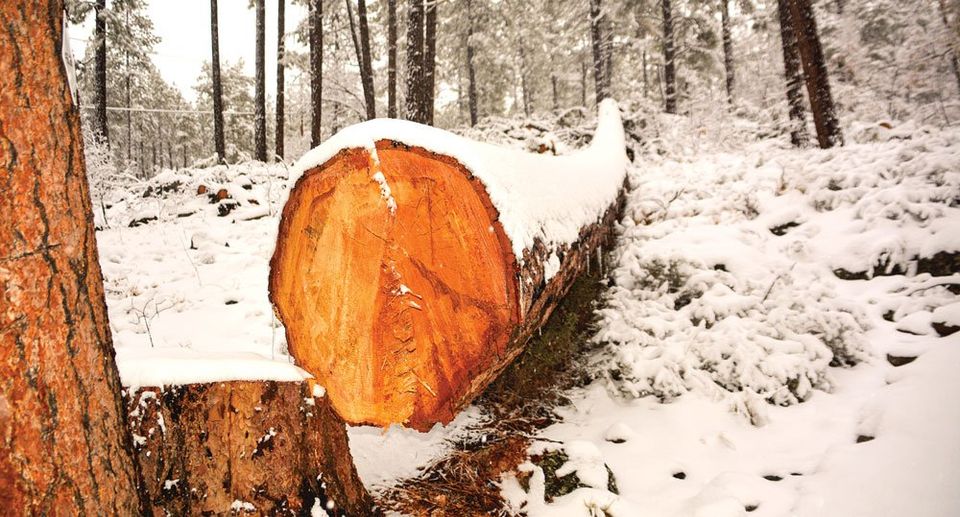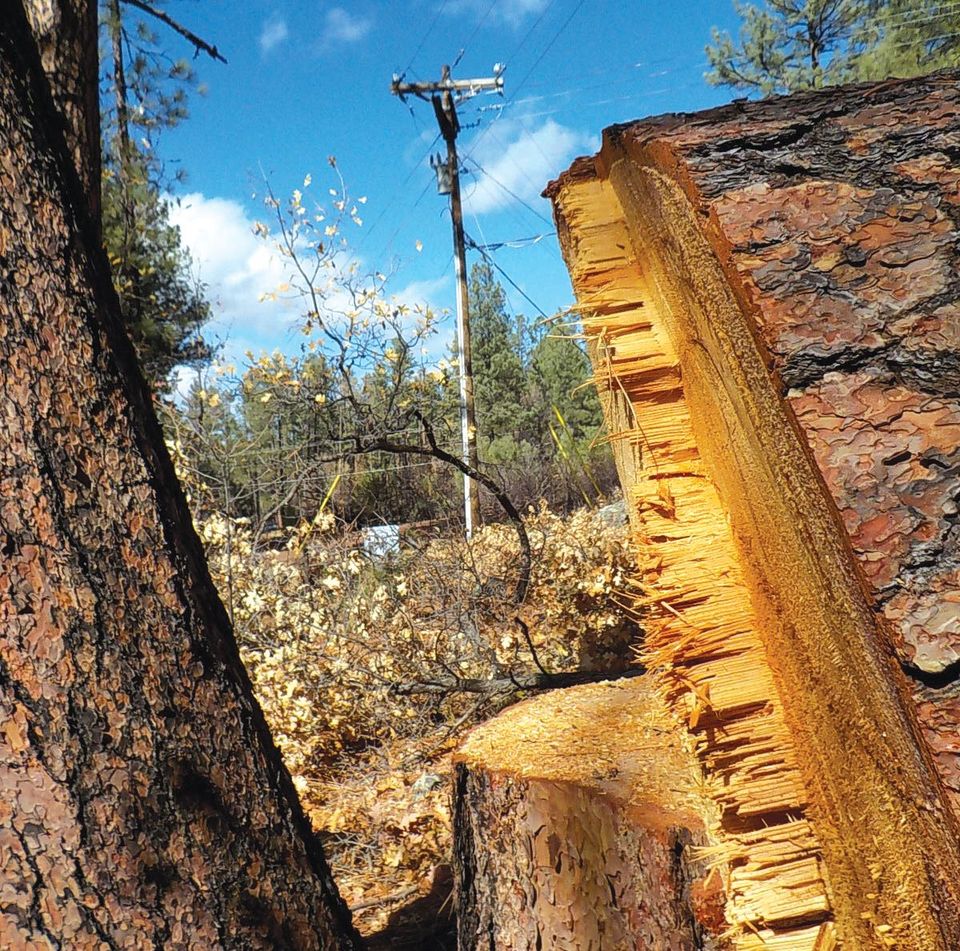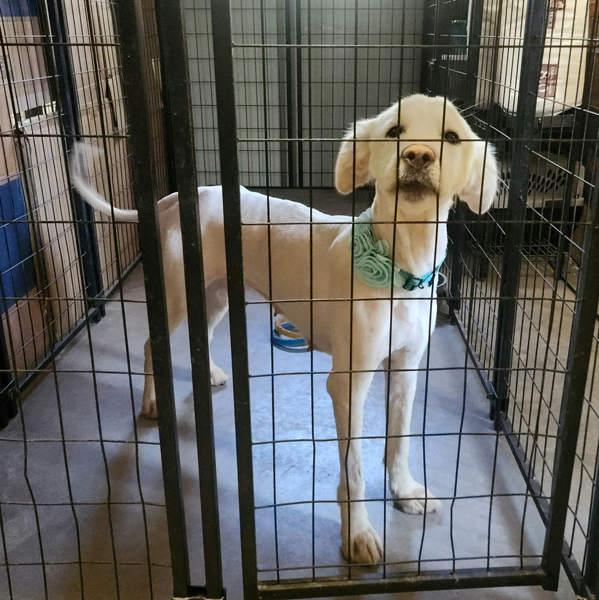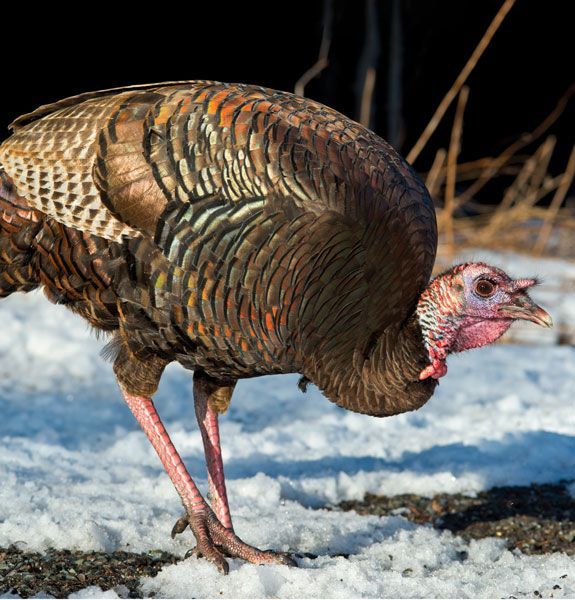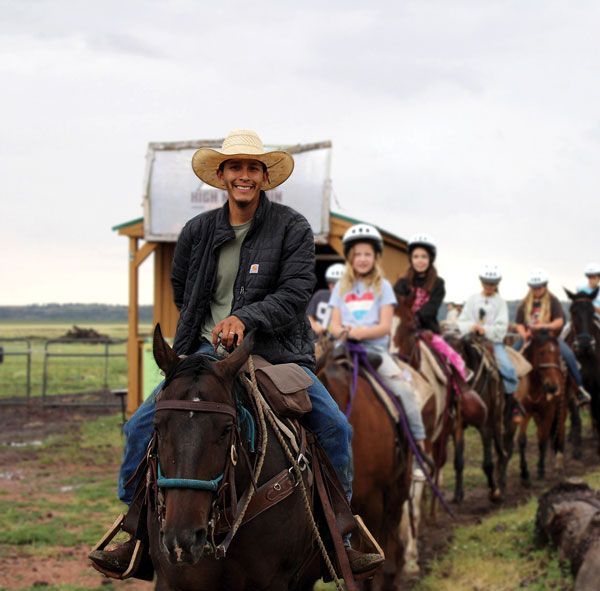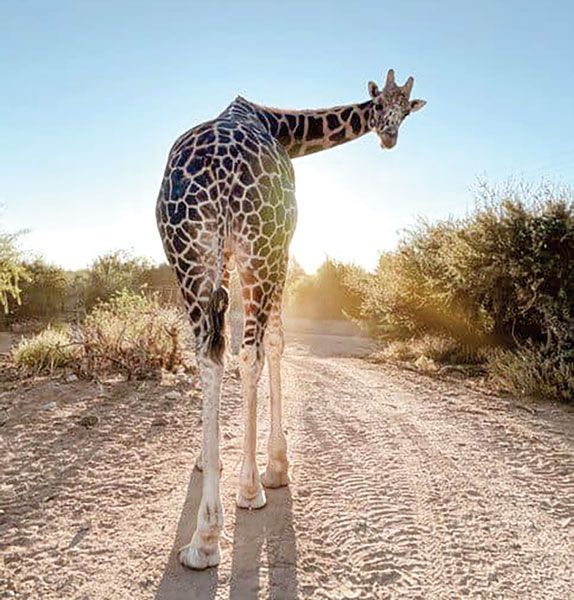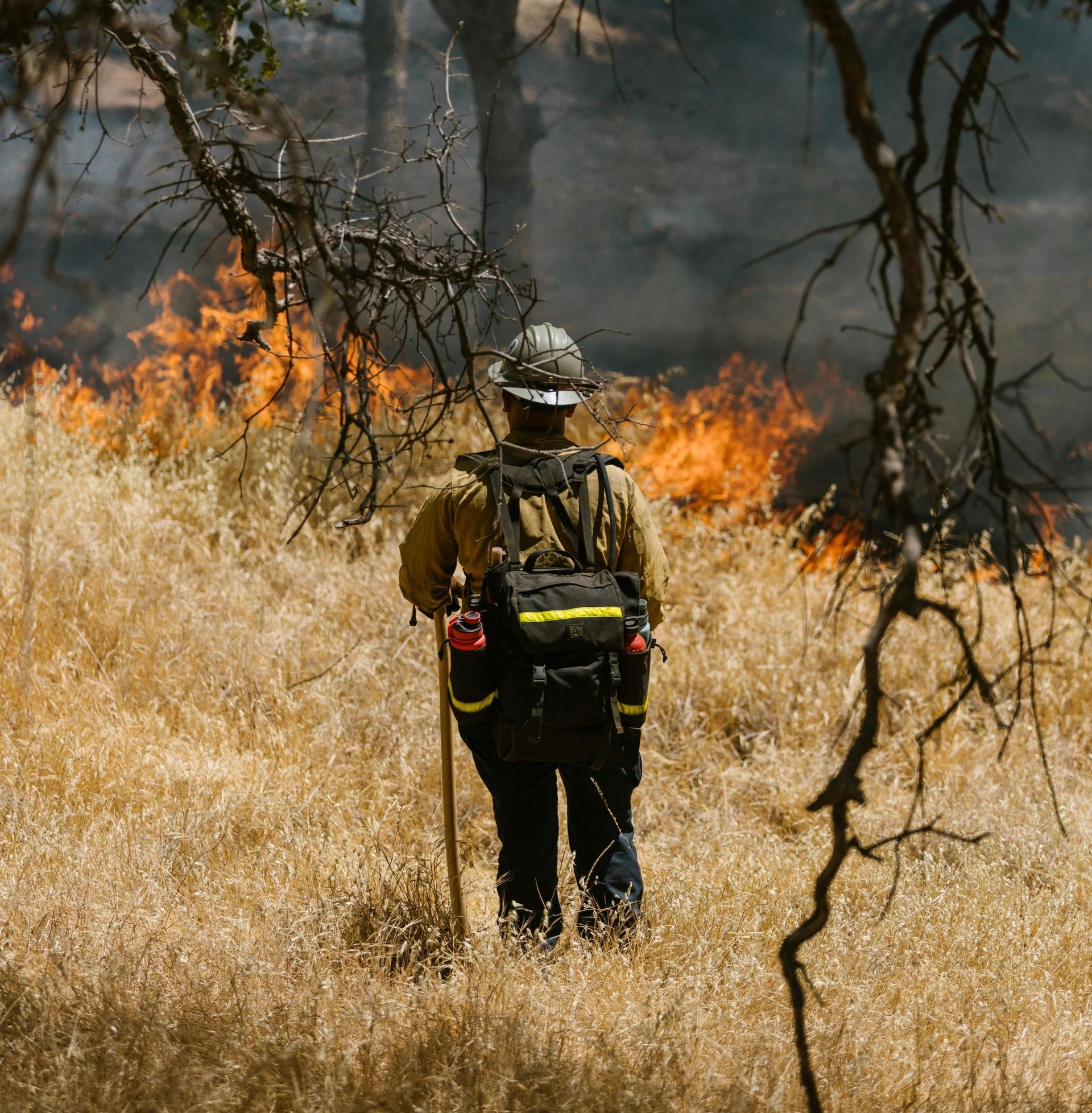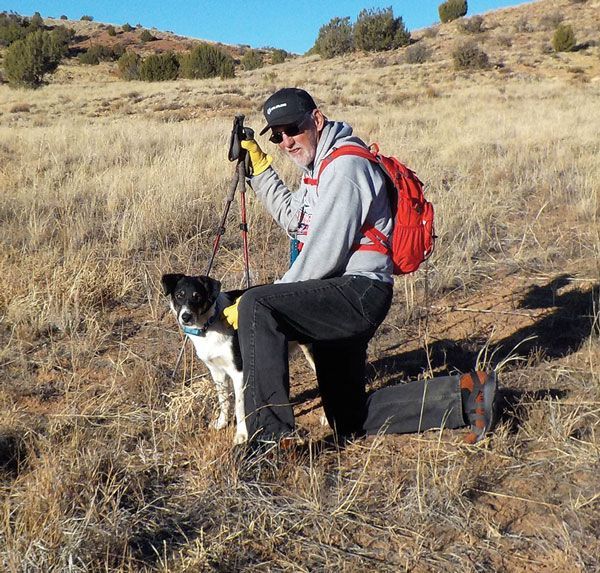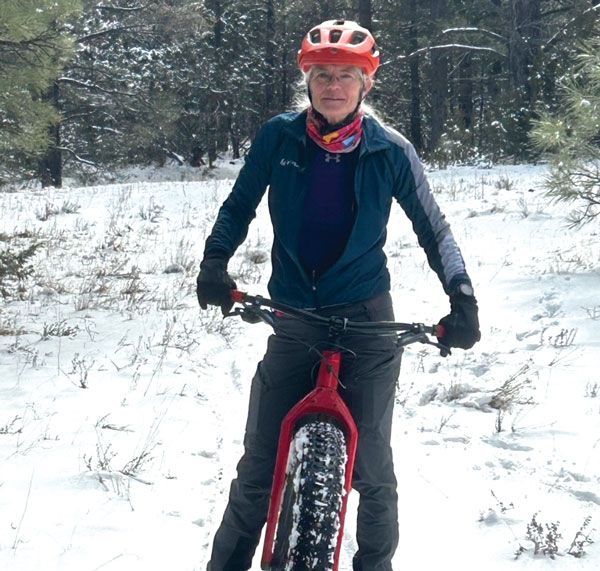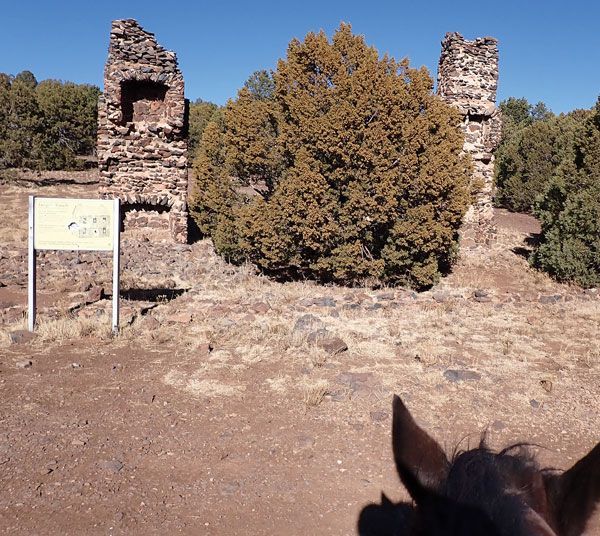An old ponderosa’s life ends in the forest of the White Mountains. Its thick ponderous trunk, a diameter of about 32 inches and numerous ring count says it could be at least 200 years old — a slow growth of about two inches or more per decade — pretty good for a southwestern pine in an area that doesn’t always see a lot of moisture. It made me wonder how this ponderosa survived from the moment its seed fluttered down to earth and the impeccable conditions which were created to nurture the tiny seed to fruition. Its journey from seed to towering pine is filled with horrific danger with very slim chances of survival.
There were so many things that could have gone wrong — from the very beginning. First of all, seeds need moisture, something we don’t see much of in the southwest. According to Forest Scientist M.M. Larson*, seedlings that get started in the third week of July survive the best — timing is crucial. He states that “Seedlings that are started after mid-August were generally killed during the fall drought or by frost heaving (upwards swelling of soil during a freeze) before the next growing season.” He goes on to say that seeds that fall directly on the ground surface have an extremely poor chance of surviving. So, the ponderosa seedling would have needed a light covering of soil or a layer of pine needles. Forester Ron Miller told me that “sometimes a seed can get stuck in tall grass and never have a chance to touch the ground.” He also mentioned that, in some instances, cattle or other ungulates will eat the grass and then provide the right nutrients for a seed. Many things need to happen to provide the right growing conditions.
So, the old ponderosa got a good start as a seed.
As a young seedling, the chances of damage by severe winter drying is more likely eminent. Gustav Pearson*, another well-known forest scientist, wrote, “Winterkill occurs when the soil moisture pithing the root zone is frozen and unavailable to the plant while the plant continues to transpire (give off water vapor through the needles) and use water.” Temperature significantly influences the height and diameter growth, seed crops, seed germination and generally a ponderosa pine’s mortality. From a ponderosa pine’s beginning growth until it ends, its growth is totally dependent on temperature and moisture conditions.
Also, ponderosa pines are shade intolerant. “They benefit from all the light they can get, although, as a young seedling, shade can improve moisture conditions. However, if they don’t grow out from under shade or the shade is not removed, they seldom survive. (Pearson). The lives of ponderosa pines have many obstacles to face throughout their lives but they are most vulnerable during the early years.
I was told by Tom Jernigan this summer that “trees never die of old age." And Miller told me that, “More trees face mortality than make it to an old age.” We live in the largest continuous ponderosa pine forest in the world, extending about 300 miles from central Arizona to western New Mexico… and death to these trees comes in many forms.
Wind is a primary cause of damage and windfall to ponderosa pines and lighting kills just as many. However, unlike windfall, lightning isn’t always fatal. But older, mature trees towering above the stand are frequently hit by lighting.
Disease can affect ponderosa pine from the seedling stage all the way to maturity. Seedlings can get a “damping-off fungi.” Then as they mature, ponderosas fall victim to the “stem” variety such as mistletoe or “systemic” diseases such as limb rust or Atropellis canker. Root fungus such as Armillaria root rot kills trees.
Needle diseases such as Lophodermella and Elytroderma needle blights often deform a tree. One of the most feared threats to our beautiful stands of ponderosa pines are the dreaded beetles. Arizona’s drought makes it difficult for any tree to fight them off — and there are so many varieties. The mountain pine beetle (the most aggressive and destructive), the western pine beetle, the round-headed pine beetle, the turpentine beetle and the Arizona five-spited ips.
Even cones are subject to pine seed moths and cone beetles. Root grubs and cutworms and shoot moths are a few others that steal the health from our beautiful ponderosa forests.
As much as we love our wildlife, some of them also threaten the immortality of ponderosa pine. Mice, rats, chipmunks and ground squirrels — even bunnies — consume huge quantities of seeds and injure and sometimes kill many young seedlings from the time they emerge above the ground surface. Porcupines have caused serious damage to ponderosa pines’ pole-sized trees and young saw timber. They will debark or completely girdle seedlings and saplings.
From my many hours of research on the mortality of ponderosa, I have concluded that despite the many (and I am sure there are more) obstacles this old ponderosa pine -- most likely -- narrowly dodged, that there was some sort of intervention or favor that played a part in its survival for almost 200 years. Little did it know, that implementing the power line along-side its towering ponderous trunk was the beginning of the end of its life — for whatever reason.
Ponderosa pine trees can grow to be as old as 500 years or more. This particular tree started growing before Arizona was even considered a territory. Imagine that. The tiny seed that hit the ground, and in its some 200 years of growth, met with impeccable conditions in order to grow into a tree and then survived animals, beetles, disease, all Mother Nature’s natural destructions — but it didn’t survive a chainsaw.
THE SEDUCTION OF POWER
By Rob Bettaso
Walking the Old Hatchery Trail,
The root-filled path, lined with juniper, oak, pine.
Now, descending: approaching the stream, near the old wooden bridge, here, at the end of the year,
And soon, upon the severed trunk, the end of two centuries of life.
A leviathan, not beached but fallen,
Cut down, still in its prime,
An old but solid, sturdy Ponderosa Pine.
The autumn chill, made more icy by the stock still, still green, still redolent, felled giant.
No mourners moan, no congregants whisper, no gathered souls stifle sobs,
But the dry leaves of the crouched oaks rustle, the needles of the tall sentinel pines let the wind whine
Through their open spaces,
And I hear the moans, whispers, sobs of the forest.
I cannot shake the now dreary mood,
The ache of loss, as I resume my route,
And stop on the bridge, peering into the dark, cold stream,
Wondering, how many times this stream filled the big pine's
Trunk, from roots to crown, through drought and glut of rain.
How the multitude of straws from the thirsty tree, pulled up the water from the earth and made our sky
Full, of so many colors and shadows, hushed choral voices, creaks and cracks in the lonely winds.
Filled our lungs with memories of cedar chests, holding tight, our plaid winter blankets,
And shook our grip with a shaggy, vanilla-scented bark and poked our hands with its spiny pinecones, Soon, destined to become a grade-school craft, made to make our mothers smile and stroke our heads.
And, after a long while,
I took again to the wending trail,
Noting the trend: the trees that dared to grow along the row,
Of straight, bare, limbless poles; with wires strung from beam to beam,
Had to go, had to be cleared, so no power would fail.
We had made the trade: the dappled shade of the oak, the spice of the pine, the heat of all wood,
Would be replaced; by the glare, by the shine, by the mechanized tone,
Of a screen, of a bulb, of an illuminated phone.
